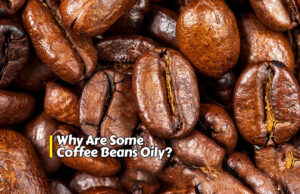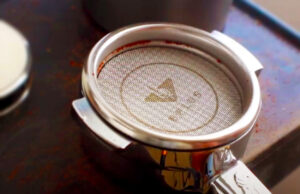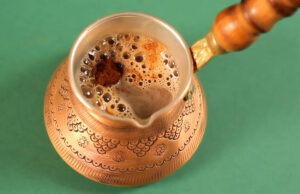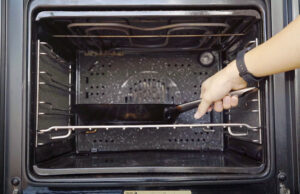Some of our posts contain affiliate links. If you buy through our links, I may earn a small commission at no extra cost to you.
Brewing Temperature: Importance and Adjustments
As an experienced coffee lover and tea lover, I’ve learned to appreciate both the art and science of brewing. While many factors contribute to creating the ideal cup, one often-overlooked factor is the temperature during brewing. Temperature matters when it comes to creating the best coffee or tea beverages, from its flavor, aroma, and strength. Temperature control goes beyond simply understanding water temperatures; instead, it should focus on understanding why temperature needs to be managed for desired results.
In this blog post, I will share my expert insight into the significance of brewing temperature, explore its scientific foundations, and provide practical tips to adjust and optimize it to elevate your brewing game. So grab your favorite mug, and let’s dive headfirst into this fascinating world of brewing temperature!
Brewing Temperature and Flavor Extraction
Brewing coffee or tea requires more than simply pouring hot water onto the ground or leaves – it involves various chemical reactions that take place, with the temperature being an influential factor. Brewing temperature has an enormous influence over the flavors, aromas, and strength of the final beverages produced.

Coffee or tea’s flavors are extracted through a process known as solubilization, where water dissolves the soluble compounds in its grounds or leaves. Brewing temperature plays a key role in this process by altering its rate of extraction; when the water temperature is too hot it may over-extract the coffee or tea too quickly, leaving an overly bitter or astringent taste; on the other hand, if the water temperature is too cold it could under-extract, leaving weak and dull beverages behind.
Coffee typically requires temperatures in the range of 195-205°F (90-96°C) while ideal tea brewing temperatures can range from 160-212°F (70-100°C), depending on type and roast level, personal preferences, and other considerations.
Temperature also has an influence on flavor extraction; higher temperatures tend to extract more acidic compounds, leading to brighter and more vibrant flavors, while lower temperatures extract sweetness with reduced acidity – therefore different coffee or tea varieties may require specific temperature ranges in order to achieve their desired flavors.
Brewing temperature not only determines flavor extraction but also impacts the strength or concentration of your beverage. Higher temperatures tend to extract more soluble compounds, producing stronger brews; while lower temperatures extract fewer compounds, leading to weaker drinks. That is why controlling your brewing temperature is integral in creating your ideal coffee or tea experience.
Understanding brewing temperature is integral to producing delicious coffee or tea beverages, as it requires striking the ideal balance between extracting flavors and strength without over or under extracting. Experimentation with various temperature settings until finding your brew’s ideal range can unlock its full potential and take your brewing game to new heights.
Also Read: The Art of Grinding: How Grind Size Impacts Your Brewing Process
Temperature Control: Finding the Sweet Spot
Temperature control is an art that demands precision and dedication when it comes to brewing coffee or tea, with pinpoint precision required in finding your ideal temperature setting for each coffee or tea leaf and extracting all its flavors for the optimal strength and aroma in each brew.

Different varieties of coffee and tea require specific temperature ranges to bring out their distinct flavors. For example, lighter roast coffees may benefit from slightly higher brewing temperatures to extract delicate floral or fruity notes while darker roasts might benefit from slightly lower temperatures in order to prevent over-extraction and bitter flavors from overtaking them. Tea varieties like green, black, or oolong may have their own specific ideal temperature ranges for producing their characteristic profiles.
Finding your optimal brewing temperature requires experimentation and fine-tuning, using tools like thermometers to measure water temperatures accurately. Preheating equipment like coffee makers or teapots may help maintain an even brewing temperature throughout.
As mentioned previously, environmental factors such as room temperature, altitude, and humidity can all impact brewing temperature; making adjustments based on your specific brewing setup and environment can ensure you achieve maximum results.
Finding the optimal temperature for your coffee or tea may require some experimentation, but the rewards of doing so can be worth your while. Understanding your coffee’s or tea’s characteristics, experimenting with various temperature ranges, and refining your brewing process to find one with the ideal blend of flavors, strength, and aroma are worth your while!
Adjusting Brewing Temperature: Tips and Techniques
Adjusting the brewing temperature is one of the key aspects of coffee or tea brewing, as it directly affects its flavor, strength, and aroma. Here are some techniques for optimizing this aspect for optimal results.
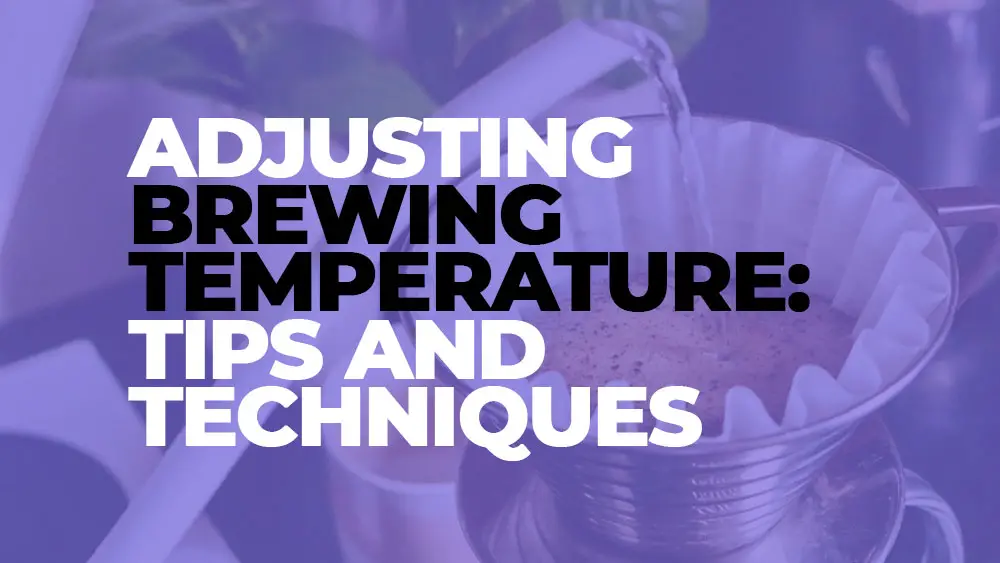
Experiment with Temperature Settings: Start with the recommended range for your coffee or tea, but don’t hesitate to experiment with different temperature settings in order to discover which temperature best matches your individual preferences and taste profile. Try brewing at slightly higher or lower temperatures until finding one with optimal flavor profile results.
Consider Roast Level: Your bean’s roast level can also influence the ideal brewing temperature. Lighter roasts may require higher temperatures for extracting delicate flavors, while darker roasts might need lower temps in order to prevent over-extraction. Make adjustments accordingly according to roast level for optimal brewing temperatures.
Preheat Your Brewing Equipment: Preheating your brewing equipment like a coffee maker or teapot before each use can help ensure a stable brewing temperature. Rinsing with hot water before use will warm it up further and prevent temperature loss during brewing.
Take into account environmental factors: Room temperature, altitude, and humidity all have an effect on brewing temperature; if you’re in an extremely cold or high altitude area it may be necessary to adjust your brewing temperature accordingly to compensate for these elements.
Apply a Thermometer: Utilizing a thermometer can give accurate and consistent measurements of water temperature for improved results in your brewing processes. Make sure you purchase a high quality thermometer to achieve accurate control during brewing sessions.
Time Your Brew: Brewing time plays an integral part in controlling the temperature; longer brewing times may require slightly lower temperatures to avoid over-extraction, so experiment with various brew times and temperatures until you find what suits your brew best.
By following these techniques and tips, you can effectively adjust the brewing temperature to achieve the perfect flavor, strength, and aroma of your coffee or tea. While fine tuning might take some practice and experience to perfect, mastering temperature adjustment will undoubtedly increase your brewing skills for an excellent cup of coffee or tea!
Unlocking the Full Potential: Exploring Advanced Brewing Techniques
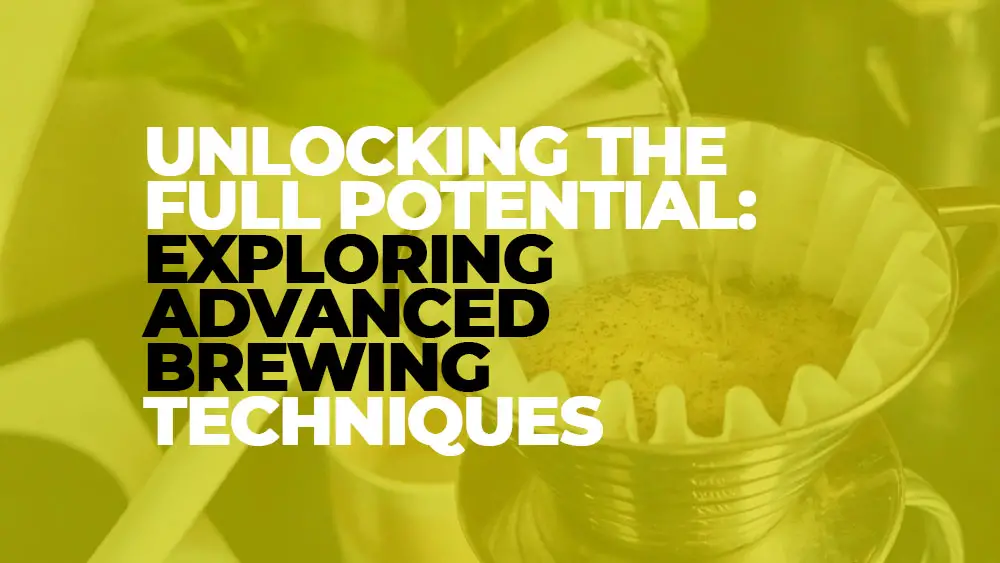
Temperature is a critical element in coffee and tea extraction, and altering it can dramatically change its flavor, strength, and aroma. While basic temperature adjustments are key, advanced brewing techniques may offer even greater potential to your beverage brews. Let’s explore some advanced brewing techniques that could elevate your coffee or tea brewing game!
Temperature Profiling
To do a temperature profiling brew is to alter the brewing temperature at different stages of a brew cycle with intention and with greater control than standard techniques would allow. By doing this you can manipulate both extraction rate and flavor development for an enhanced and complex cup of coffee or tea. You could start off at a higher temperature for the initial burst of flavor extraction before dropping down to slower extraction rates and accent specific flavors – often seen when using pour-over methods such as Chemex or Hario V60 which give more direct control of this method than standard methods like standard methods do!
Reverse Brewing
Reverse brewing is a brewing technique in which water starts at a lower temperature and gradually increases throughout the brewing process, often used with immersion methods like French Press or Aeropress where coffee or tea steep together for extended periods. Starting at lower temperatures results in milder extraction at first; gradually building to higher temperatures for robust extraction toward the end; this can create an exciting flavor profile and depth.
Cold Brew and Cold Steeping
Cold brew and cold steeping are techniques in which coffee or tea is steeped for an extended period in cold water – typically 12-24 hours – before being extracted using conventional methods. These processes result in a flavorful beverage with reduced acidity and bitterness due to extended steeping time despite lower brewing temperature; cold steeping can even be used as an interesting way to add unique tastes when used hot beverages like coffee. Cold steeping has long been used as an iced coffee technique but also creates unique flavor experiences when used for hot beverages like coffee brews.
Siphon Brewing
Siphon or vacuum brewing (sometimes referred to as siphon brewing) is an engaging brewing method that utilizes both vacuum pressure and vapor pressure to produce coffee or tea with a distinct mouthfeel. Brewing temperature in this brewer is controlled via a heat source (typically a butane or alcohol burner), enabling precise temperature regulation and extraction; producing clean-tasting cups with distinct mouthfeel!
Water Temperature Stability Tools
Advanced brewing techniques often necessitate precise temperature stability. There are various tools available that can assist in this regard, including electric kettles with temperature controls, immersion circulators, or temperature-stable brewing chambers. All these can ensure consistent and accurate temperature management during the brewing process and produce more precise and reproducible beers.
Monitoring Extraction Yield
Monitoring the strength of your brew is an advanced technique for optimizing brewing temperature. Extraction yield is defined as the percentage of coffee or tea solubles extracted from grounds during brewing, so by measuring this value, it can help determine the optimal brewing temperature for any specific coffee or tea and guide temperature adjustments accordingly. Refractometers or coffee extraction meters can help measure extraction yield to help guide these adjustments.
Cupping and Tasting
Cupping and tasting are essential techniques for assessing the flavors and nuances of your brew. By cupping, which involves slurping coffee or tea from a spoon into your mouth to aerate and spread across your palate, you can identify various flavor characteristics of your beverage. Tasting different brews helps fine-tune temperature adjustments until reaching your desired flavor profile. Although these methods rely heavily on personal preference and sensory perceptions, cupping and tasting provide valuable feedback regarding how different temperatures affect the final cup outcomes.
See Also: Extraction Time of Coffee and Tea: Understanding Extraction and Its Effects
Faqs
Why is Brewing Temperature Important in Coffee and Tea Brewing?
Brewing temperature plays a pivotal role in coffee and tea brewing as it directly impacts the extraction process. Attaining optimal extraction helps extract desirable flavors and aromas from coffee grounds or tea leaves without over-extraction or under-extraction – impacting strength, body, acidity, and overall taste in each final cup produced.
Can Brewing Temperature Be Adjusted?
Yes, brewing temperatures can be adjusted to achieve your ideal flavor profile. Many coffee and tea brewing methods enable temperature adjustments either manually or with equipment equipped with temperature controls. Temperature profiling – which involves altering brewing temperatures at various points throughout the brewing process in order to achieve specific flavors – is another technique that may be employed.
Are There Any Common Brewing Temperature Adjustments?
Common temperature adjustments when it comes to coffee and tea brewing include using water at various temperatures, preheating the equipment used for extraction, and adjusting brew time accordingly to control the extraction process. For instance, using cooler water or shortening brewing times may produce lighter cups while increasing or shortening brewing times can produce stronger ones; when making temperature adjustments keep in mind both your personal taste preferences as well as any type of coffee or tea being prepared when making changes.
What are Some Advanced Brewing Techniques for Temperature Control?
Advanced brewing techniques for temperature control include temperature profiling, reverse brewing, cold brew/cold steeping techniques, and siphon brewing as well as using temperature stability tools. Temperature profiling involves altering the brewing temperatures at various stages to produce specific flavor profiles, while reverse brewing involves starting with hot water and gradually decreasing it during brewing.
Cold brew and cold steeping use cold water to extract flavors over an extended period. Siphon brewing uses heat to create a vacuum that draws water through coffee or tea grounds into an extraction device called a siphon, while temperature stability tools, such as PID controllers or temperature-controlled kettles provide precise temperature management during brewing.
What is Extraction Yield and How Can It Relate to Brewing Temperature?
Extraction yield measures the percentage of coffee or tea solids extracted from their grounds during brewing into the water, with higher temperatures generally leading to greater extraction yields and vice versa. Monitoring extraction yield can assist in identifying an ideal brewing temperature to reach desired flavors and strengths in final cups.
How Can I Adjust the Brewing Temperature for Iced Coffee or Cold Brew?
Brewing temperature adjustments for either beverage can be achieved using cold water, or steeping coffee grounds/tea leaves in it for an extended period. Cold brew typically involves steeping coffee grounds in cold water for 12-24 hours, while iced coffee can be prepared by brewing coffee with hot water before cooling it with either cold or ice water afterward. Also, changing up brewing times or investing in specific cold brewing equipment may help regulate brew/iced coffee temperature to make beverages truly special!
How Does Water Quality Affect Brewing Temperature?
Water quality has a huge effect on brewing temperature as it impacts heat transfer and extraction processes. Mineral content such as calcium and magnesium in water may influence its boiling point and heat conductivity rates, necessitating adjustments in brewing temperature to account for different boiling points and transfer rates. Hard or soft water can alter the extraction process as well as the flavor of the final cup so it is crucial to evaluate water quality carefully and adjust brewing temperature appropriately.
Can I Use a Regular Kitchen Thermometer to Measure Brewing Temperature?
While regular kitchen thermometers can be used to accurately measure brewing temperatures, their results may not always provide accurate readings during the brewing process due to rapid temperature fluctuation. A regular thermometer may miss these changes and for accurate temperature readings during brewing a digital or probe thermometer with high accuracy and fast response time is recommended – some electric kettles and coffeemakers even come equipped with built-in thermometers that make temperature regulation easy!
How Can I Troubleshoot Brewing Temperature Issues?
If you are experiencing issues with your brewing temperature, there are several steps you can take to address the situation. First and foremost, ensure your equipment is correctly calibrated and working. Check the water temperature using an accurate thermometer and ensure it falls within your desired range. If necessary, adjust brewing time, water-to-coffee, or water-to-tea ratio or method until the desired temperature has been attained.
Experiment with different temperatures and brewing techniques until you find one that matches your preferred flavor profile. Also, take into consideration the quality of water you are using and make any necessary adjustments if required. Consulting guides or professional recommendations from baristas or tea sommeliers may also help with troubleshooting temperature-related brewing issues.
Final Thoughts
Mastering the art and science of brewing temperature is essential for producing truly exceptional coffee or tea beverages. Advanced brewing techniques such as temperature profiling, reverse brewing, cold brew/cold steeping, siphon brewing, and temperature stability tools offer greater control and customization in the brewing process. Monitoring extraction yield and using cupping and tasting to achieve your desired flavor profiles can provide essential feedback for adjusting temperatures to reach them.
By exploring these advanced techniques, you can unlock the full potential of your brew, taking your brewing game to new heights! So join me on an exploration of flavor discovery as temperature-controlled brewing unlocks its full potential and fills your cup with diverse and subtle tastes!


